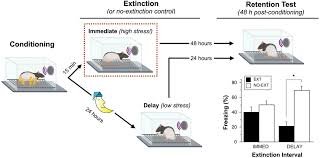Background:
- The Indian government mandated the use of the Aadhaar-Based Payment System (ABPS) for the Mahatma Gandhi National Rural Employment Guarantee Scheme (MGNREGS) payments from January 1st, 2023.
- This decision was taken to improve the efficiency and transparency of the payment process.
MGNREGA Overview:
- Launched in 2005, MGNREGA is one of the largest work guarantee initiatives in the world.
- It aims to provide 100 days of wage employment per year to adult members of rural households willing to do unskilled work.
- As of now, there are about 14.32 crore registered job cards, with a significant percentage being active.
What is the ABPS?
- Introduction: Initially voluntary in MGNREGA since 2017, ABPS became mandatory from January 1st, 2024.
- Mechanism: ABPS uses the unique 12-digit Aadhaar number of workers to link their job cards and bank accounts, creating a seamless payment channel.
- Integration: It requires integration of Aadhaar details with the National Payment Corporation of India database.
Why the Government Mandated ABPS?
- Direct Benefit Transfer: ABPS facilitates direct transfer of wages to the workers’ bank accounts, reducing delays.
- Eliminating Fake beneficiaries: It helps in identifying and eliminating fake beneficiaries, ensuring that funds reach the rightful recipients (MGNREGA worker)
- Administrative Efficiency: Make more efficient the process of wage distribution, making it faster and more reliable.
- Transparency: Enhances transparency in transactions, allowing for better tracking and auditing of funds.
- Financial Inclusion: Encourages workers to open bank accounts, promoting financial inclusion.
Additional Benefits of ABPS:
- Empowerment Through Banking: By linking payments to bank accounts, workers get more control over their finances.
- Reduced Corruption: Limits the possibility of corruption at various levels of fund distribution.
- Time-Efficiency: Speeds up the process of wage payments, reducing the waiting period for workers.
- Record Keeping: Simplifies the record-keeping process, making it easier to manage and audit.
Technological Innovations in MGNREGA:
- National Mobile Monitoring System (NMMS): Improves transparency with real-time attendance and geotagged photos.
- National Electronic Fund Management System (NEFMS): Facilitates direct wage transfers to beneficiary accounts.
- Geo Tagging of Assets: Adds geographical data to media for public scrutiny.
- Job Card Updation: Regular updates to remove invalid job cards.
- Drone Monitoring: Employs drones for enhanced monitoring and data collection.
Addressing Technological Challenges:
- IT Infrastructure Improvement: Upgrade digital facilities at gram panchayat levels.
- Digital Literacy Enhancement: Educate workers about digital payment processes.
- Banking Facilities Expansion: Introduce Banking facilities in unbanked rural areas.
- Official Training and Development: Provide ongoing training on Aadhaar processes to local officials.
Conclusion
The implementation of the (ABPS) in the (MGNREGS) represents a significant move towards improving efficiency, reducing fraud, and ensuring transparency in wage distribution. This technological integration not only enhances the payment process but also promotes financial inclusion among rural workers, marking a progressive step in the administration of one of India’s key social welfare programs.




